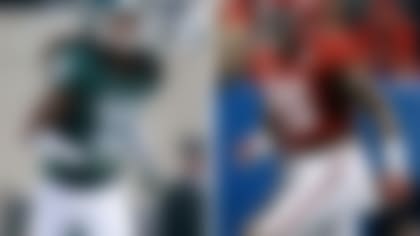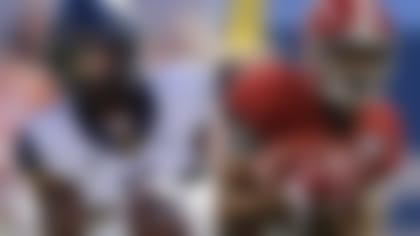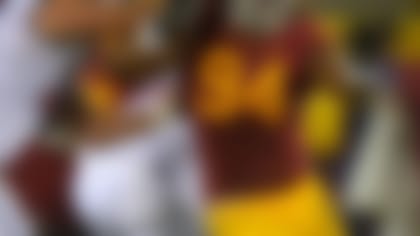Does size really matter? That what scouts are pondering after taking a look at the cornerbacks from the 2009 draft class.
With the league increasingly becoming a big man's game on the edges due to the presence of bigger receivers, teams are looking to identify pass defenders with the requisite size and athleticism to match up in space.
By pro standards, big corners are best described as cornerbacks who measure in at 5-foot-11 or higher (6-foot or higher for some teams). They are coveted because they possess the height and length to hold their own in jump ball situations, and also have the size to be effective as run defenders. While big corners typically lack the footwork and movement skills of their diminutive brethren, scouts obsessively beat the bushes looking for these rare athletes.
Draft series: Cornerbacks
 NFL.com's 10-part series looks at each position in the draft.
Cornerbacks package
» Video: Mayock's top five
» Photos: Top prospects
» Debate: Malcolm Jenkins' value
It's not a coincidence that Malcolm Jenkins, Vontae Davis and Darius Butler are expected to come off the board in the first round, as each exhibits the necessary skills required for the position and also fit the mold of a big corner.
However, teams focused exclusively on identifying big corners are missing out on a host of talented, but miniature, corners with elite talent.
Alphonso Smith, D.J. Moore and Jairus Byrd are a gifted trio of ball-hawking corners who, unfortunately, measure in below the 5-10 standard. Though they combined for 50 interceptions during their careers, their lack of prototypical height and size is one of the reasons they are not at the top of some draft boards.
Smith, who finished his career at Wake Forest with 21 career interceptions, is one of the best ball-hawks available in this draft. He is an ultra aggressive route jumper who has a knack for reading the quarterback's eyes and making plays on the ball. Smith's penchant for coming up with the game-changing turnover is a skill coveted by many coaches, but his lack of ideal height will prevent some from pulling the trigger.
Moore is another playmaker who has seen his stock fall due to his lack of ideal height and speed. The two-time All-SEC selection tallied five interceptions this season and finished his career as a Commodore with 12 picks. A gambling playmaker with outstanding instincts and awareness, Moore has a keen sense of route recognition and isn't afraid to take a chance when he has a strong hunch. Though some would fret at his risk taking, Moore's ability to impact the game as a pass defender is undeniable.
In the case of Jarius Byrd, the former Duck not only lacks the requisite height for the position, but he lacks the elite speed to be deemed a top tier corner. However, judging the All-Pac 10 performer by his measurables would diminish the tremendous set of skills that he displays as a cover corner. Byrd's natural feel for the game is astonishing and his ability to consistently get his hands on the ball is remarkable. In just 39 games with the Ducks, Byrd tallied 17 interceptions, which ranks as the second-highest total in school history.
However, the fascination with size doesn't always work against draft hopefuls. Several unlikely prospects have benefitted from having the ideal physical dimensions for the position. Sean Smith, Donald Washington and Kelvin Barnes have shot up draft boards because of their prototypical size/speed ratios.
Smith, who played receiver at Utah for a season before moving to corner in 2007, has the size to match up with the league's big receivers. Although the third-year junior is raw and unrefined in coverage, his athleticism has some scouts envisioning him blossoming into an Antonio Cromartie-type talent on the corner. With that thought firmly entrenched in their minds, it will not come as a surprise to see the former Ute come off the board before some highly productive, but undersized corners.
Washington and Barnes have steadily climbed up various boards due to their ideal size and athletic ability. Although both have red flags attached to their names (Barnes missed the last four games of the season with a shoulder injury; Washington was suspended for the first two games of the season and played primarily as a backup), they are on the cusp of moving into the first day of the draft on the heels of impressive showings at the combine and individual workouts.
Scouts and coaches are seemingly willing to ignore their inconsistent play because of their athletic potential. This is not to suggest that neither has the skills to make it in the league, but their ascension up draft charts is a byproduct of the emphasis placed on their measurables, rather than their collegiate production.
With big receivers dominating the game on the edge, scouts are searching for defenders to win those respective matchups. However, you have to wonder if the search for bigger corners will cause some teams to miss out on a few hidden gems, albeit small ones.













